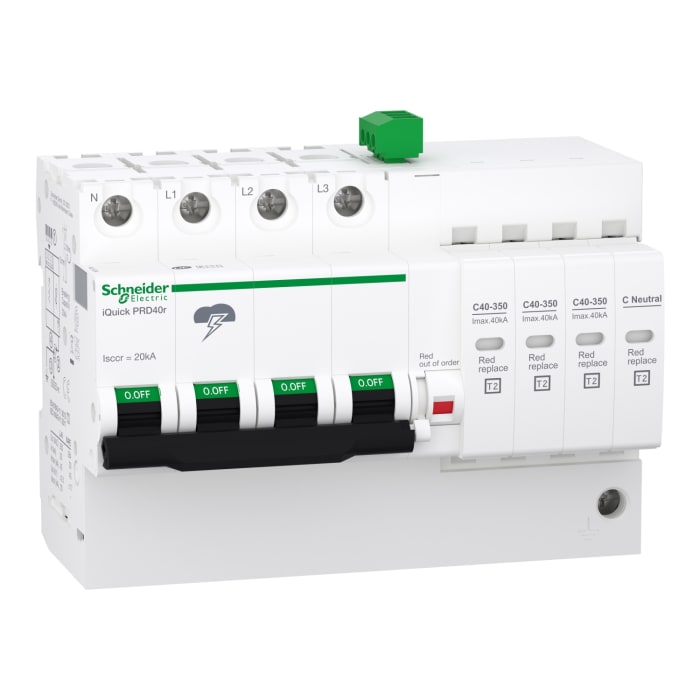Technical Document
Specifications
Brand
Merlin GerinMaximum Surge Current
40kA
Electrical Phase
3
Mounting Style
DIN Rail
Impulse Discharge Current
15kA
Length
81mm
Width
72mm
Depth
69mm
Dimensions
81 x 72 x 69mm
Minimum Operating Temperature
-25°C
Maximum Operating Temperature
+60°C
Operating Temperature Range
-25 → +60 °C
Country of Origin
Germany
Product details
Surge Protection Devices, SPDs (DIN-rail)
Voltage surges, often referred to as spikes or transients are typically caused by switching of fluorescent lights, fuses blowing or nearby lightning activity. The worst voltage spikes are usually caused by lightning strikes and can reach up to 6000V, with current surges of over 3000A. The maximum size of the let-through voltage and current inrush depends on the location within the building's wiring system. BS7671: 2011 Amendment 1 Sections 443 and 534 cover risk assessment and provides guidance on protection of electronic equipment for installation engineers to follow. The fullest information on lightning and surge protection comes from the BSEN 62305 series of standards.
Price on Asking
1

Price on Asking
Stock information temporarily unavailable.
1

Stock information temporarily unavailable.
Technical Document
Specifications
Brand
Merlin GerinMaximum Surge Current
40kA
Electrical Phase
3
Mounting Style
DIN Rail
Impulse Discharge Current
15kA
Length
81mm
Width
72mm
Depth
69mm
Dimensions
81 x 72 x 69mm
Minimum Operating Temperature
-25°C
Maximum Operating Temperature
+60°C
Operating Temperature Range
-25 → +60 °C
Country of Origin
Germany
Product details
Surge Protection Devices, SPDs (DIN-rail)
Voltage surges, often referred to as spikes or transients are typically caused by switching of fluorescent lights, fuses blowing or nearby lightning activity. The worst voltage spikes are usually caused by lightning strikes and can reach up to 6000V, with current surges of over 3000A. The maximum size of the let-through voltage and current inrush depends on the location within the building's wiring system. BS7671: 2011 Amendment 1 Sections 443 and 534 cover risk assessment and provides guidance on protection of electronic equipment for installation engineers to follow. The fullest information on lightning and surge protection comes from the BSEN 62305 series of standards.

